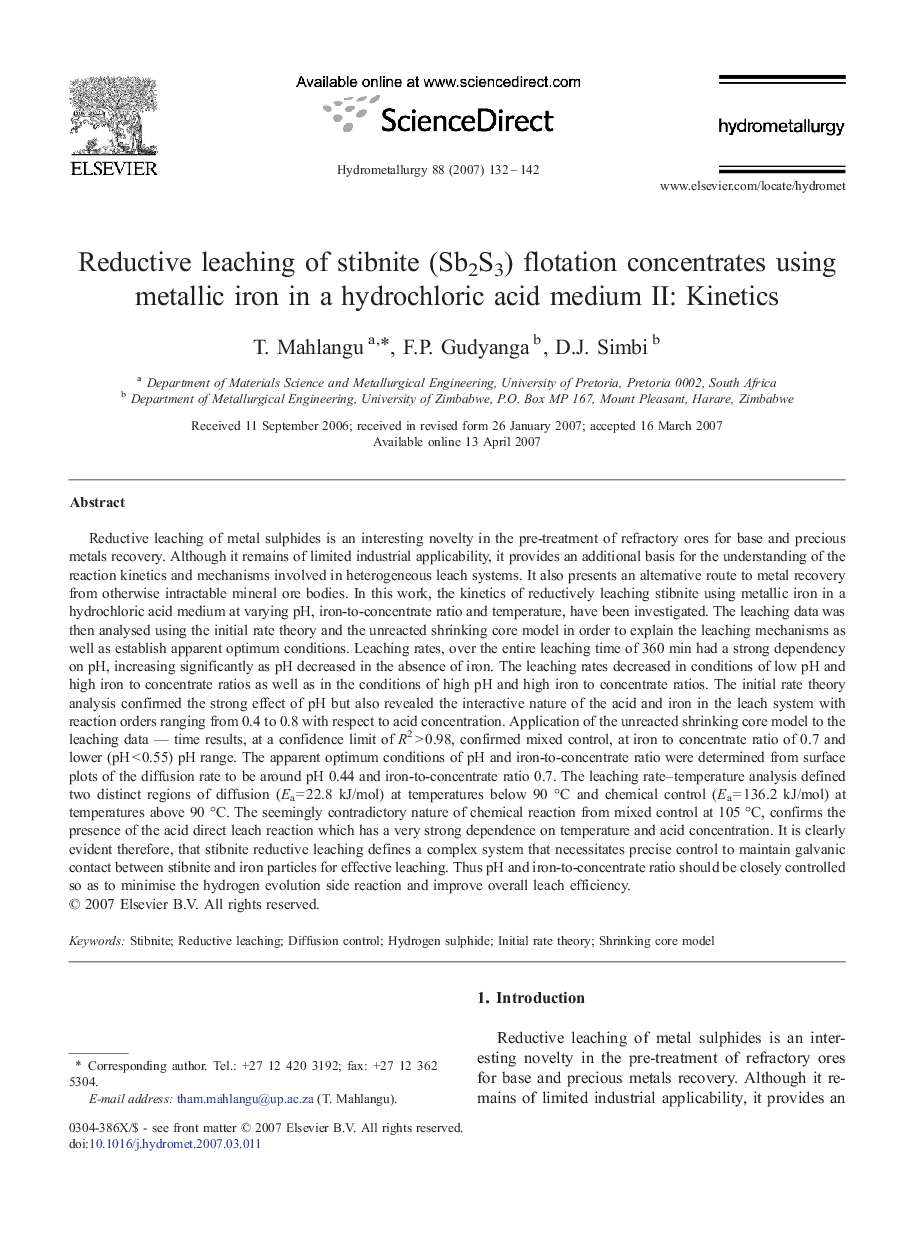| کد مقاله | کد نشریه | سال انتشار | مقاله انگلیسی | نسخه تمام متن |
|---|---|---|---|---|
| 213514 | 462105 | 2007 | 11 صفحه PDF | دانلود رایگان |

Reductive leaching of metal sulphides is an interesting novelty in the pre-treatment of refractory ores for base and precious metals recovery. Although it remains of limited industrial applicability, it provides an additional basis for the understanding of the reaction kinetics and mechanisms involved in heterogeneous leach systems. It also presents an alternative route to metal recovery from otherwise intractable mineral ore bodies. In this work, the kinetics of reductively leaching stibnite using metallic iron in a hydrochloric acid medium at varying pH, iron-to-concentrate ratio and temperature, have been investigated. The leaching data was then analysed using the initial rate theory and the unreacted shrinking core model in order to explain the leaching mechanisms as well as establish apparent optimum conditions. Leaching rates, over the entire leaching time of 360 min had a strong dependency on pH, increasing significantly as pH decreased in the absence of iron. The leaching rates decreased in conditions of low pH and high iron to concentrate ratios as well as in the conditions of high pH and high iron to concentrate ratios. The initial rate theory analysis confirmed the strong effect of pH but also revealed the interactive nature of the acid and iron in the leach system with reaction orders ranging from 0.4 to 0.8 with respect to acid concentration. Application of the unreacted shrinking core model to the leaching data — time results, at a confidence limit of R2 > 0.98, confirmed mixed control, at iron to concentrate ratio of 0.7 and lower (pH < 0.55) pH range. The apparent optimum conditions of pH and iron-to-concentrate ratio were determined from surface plots of the diffusion rate to be around pH 0.44 and iron-to-concentrate ratio 0.7. The leaching rate–temperature analysis defined two distinct regions of diffusion (Ea = 22.8 kJ/mol) at temperatures below 90 °C and chemical control (Ea = 136.2 kJ/mol) at temperatures above 90 °C. The seemingly contradictory nature of chemical reaction from mixed control at 105 °C, confirms the presence of the acid direct leach reaction which has a very strong dependence on temperature and acid concentration. It is clearly evident therefore, that stibnite reductive leaching defines a complex system that necessitates precise control to maintain galvanic contact between stibnite and iron particles for effective leaching. Thus pH and iron-to-concentrate ratio should be closely controlled so as to minimise the hydrogen evolution side reaction and improve overall leach efficiency.
Journal: Hydrometallurgy - Volume 88, Issues 1–4, August 2007, Pages 132–142